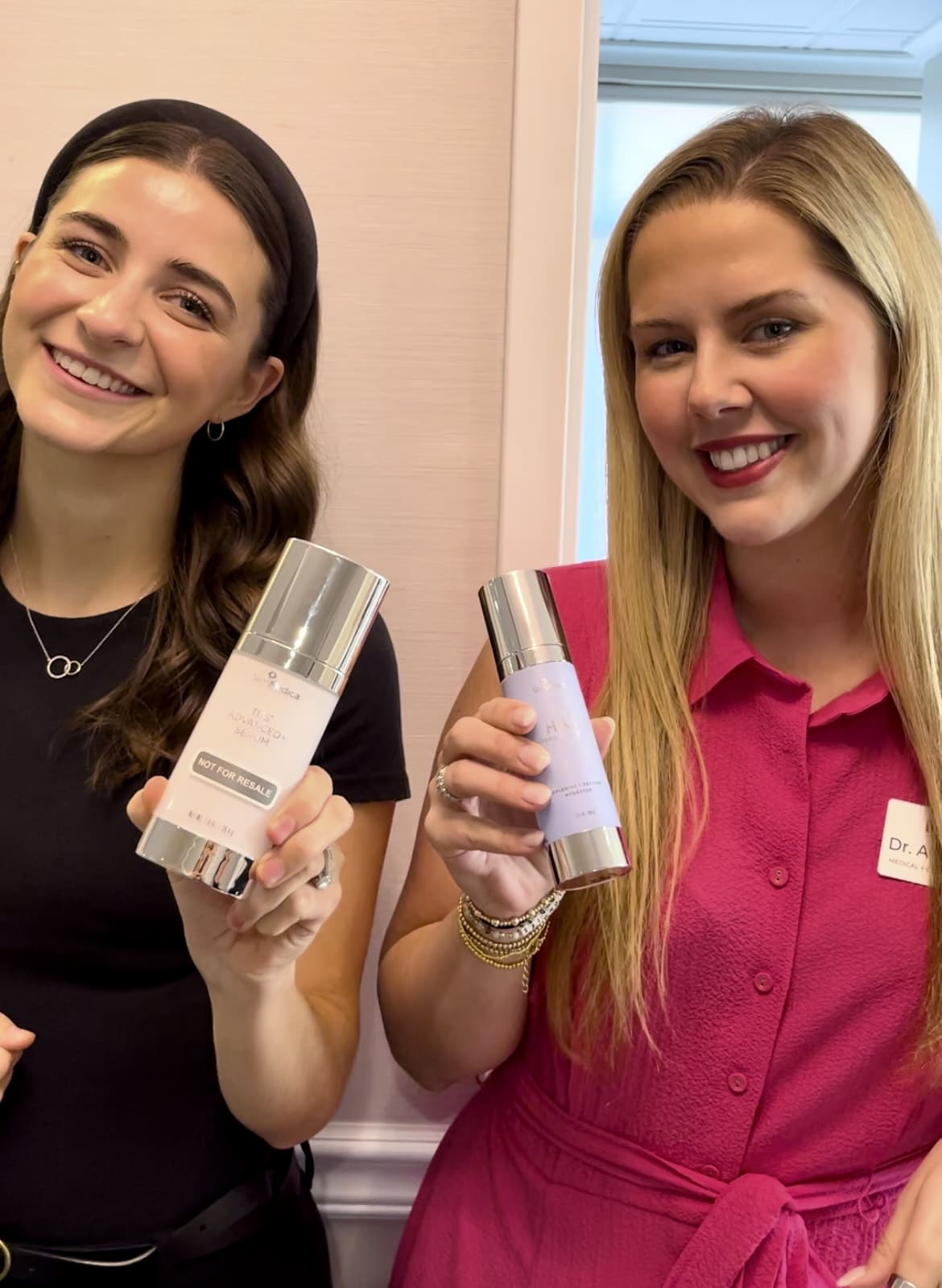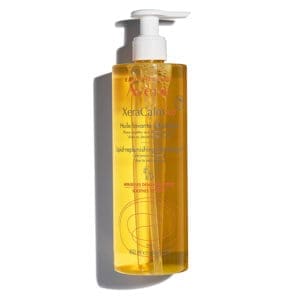What is Cleansing Oil?
Cleansing oil has become a trending skincare product in recent years. But is it even a good choice for your skin? Dr. Alexandra Bowles shares her thoughts on cleansing oil and tips on how to get the best results.
Cleansing Oils 101
Cleansing oil is a skincare product that removes makeup, dirt, and impurities from the skin. What is unique about cleansing oil is that it also is hydrating and nourishing. Cleansing oils are typically formulated with a combination of natural oils such as jojoba oil, coconut oil, olive oil, etc. These are emulsifiers that work to dissolve makeup, sunscreen, and excess sebum on the skin.
When using a cleansing oil, make sure to first choose the right oil for your skin type. Different oils have unique properties that may be better suited to certain skin types. For example, you may prefer lighter oils like grapeseed or jojoba oil if you have oily or acne-prone skin. If you have dry skin, you may benefit from richer oils like avocado or almond oil.
I typically recommend applying a small amount to your skin and gently massaging the oil in circular motions to emulsify the oil. This will turn it into a milky consistency that helps lift away dirt and makeup more effectively. Avoid rubbing or pulling at your skin too harshly, especially around the delicate eye area. Once the oil has emulsified, rinse it off thoroughly with lukewarm water. Follow up with your regular skincare routine, including moisturizer to lock in hydration and keep your skin soft and supple.

Where did cleansing oils come from? Why are they suddenly so popular?
The origins of cleansing oil can be traced back to traditional Japanese skincare practices. The concept of using oil to cleanse the skin dates back centuries in Japan, where geishas and kabuki actors used a mixture of oils, such as camellia oil, to remove heavy makeup and maintain clear, radiant skin.
Today, the popularity of cleansing oils has become heavily influenced by K-beauty (Korean Beauty) trends. South Korean skincare routines often emphasize thorough cleansing as the first step towards achieving healthy, glowing skin. The double cleansing method, which typically involves using a cleansing oil followed by a water-based cleanser, has become a cornerstone of K-beauty skincare routines. Korean skincare brands have developed a wide range of cleansing oils tailored to different skin types and concerns. Many incorporate ingredients like green tea extract, rice bran oil, and botanical extracts to provide additional skincare benefits beyond just makeup removal.
K-beauty, short for Korean beauty, refers to the skincare and cosmetic products, techniques, and routines that originate from South Korea. It has gained immense popularity globally for its innovative approach to skincare and its focus on achieving healthy, radiant skin through a multi-step regimen. These regimens often include exfoliating, toning, moisturizing, and applying targeted treatments like serums and essences. K-Beauty emphasizes hydration and nourishment while prioritizing gentle formulations with natural ingredients. Incorporating cutting-edge skincare technologies and customizing skincare routines and products for maximum benefit are also popular.
How do cleansing oils compare to normal face washes?
Cleansing oil differs from regular cleansers, face washes, and micellar water primarily in its formulation and mode of action. Cleansing oil is typically formulated with a blend of natural oils (such as coconut oil, jojoba oil, or olive oil) along with an emulsifier that works to dissolve makeup, sunscreen, and excess sebum on the skin. In contrast, regular cleansers and face washes often contain water-based formulas with surfactants that help to remove dirt and impurities from the skin.
Cleansing oil works on the principle of “like dissolves like” in that the oil in the cleansing oil binds to the oils and waxes in makeup and sebum on the skin, effectively breaking them down and lifting them away. When emulsified with water, the oil forms a milky texture that can be easily rinsed off, leaving the skin clean and hydrated. Cleansing oil is particularly effective at removing heavy or waterproof makeup. This is because it can break down and dissolve the oils and pigments in makeup products. Micellar water, on the other hand, uses micelles (tiny oil molecules suspended in water) to attract and remove dirt, makeup, and impurities from the skin without rinsing. While micellar water can effectively remove light makeup and cleanse the skin, it may not be as effective for heavy or waterproof makeup as cleansing oil.
Cleansing oil often provides additional hydration to the skin due to its oil-based formulation. It can help to replenish the skin’s natural oils and prevent it from feeling dry or tight after cleansing. Micellar water is also gentle and hydrating but may not provide as much moisture as cleansing oil, especially for dry or dehydrated skin.

What to Look for in Cleansing Oil:
When choosing a cleansing oil, it’s essential to consider both the ingredients and the texture to ensure that it suits your skin type and preferences. I recommend looking for cleansing oils formulated with natural oils like jojoba oil, coconut oil, olive oil, grapeseed oil, or sunflower seed oil. These oils can effectively dissolve makeup and impurities while providing nourishment to the skin. Ingredients like vitamin E, green tea extract, or rosehip oil can provide antioxidant benefits, helping to protect the skin from environmental damage and signs of aging. Cleansing oils enriched with botanical extracts such as chamomile, lavender, or calendula can soothe and calm the skin, making them suitable for sensitive or irritated skin.
Look for cleansing oils that contain emulsifiers like polysorbate or sorbitan oleate. These ingredients help the oil to emulsify with water, allowing it to rinse off cleanly without leaving a greasy residue.
Consider Your Skin Type:
If you have sensitive skin or are prone to irritation, consider opting for fragrance-free cleansing oils to minimize the risk of allergic reactions. Some cleansing oils have a lightweight texture that feels thin and non-greasy on the skin. These are suitable for all skin types, including oily or combination skin, and are easily emulsified with water for rinsing. A product I like to recommend to my patients is Avene’s Xeracalm Cleansing Oil which has a nourishing, biodegradable formula that seals in moisture and helps balance the skin’s microbiome while restoring the skin barrier. It’s also suitable for all ages, including newborns, and can be used for cleansing the face, body, and scalp.
On the other hand, if you have dry or dehydrated skin, you may prefer a cleansing oil with a richer texture that feels more moisturizing on the skin. These oils provide extra hydration and can leave the skin feeling soft and supple after cleansing. Make sure to also look for cleansing oils labeled as non-comedogenic, meaning they are less likely to clog pores or cause breakouts. These oils are suitable for acne-prone or sensitive skin types.
Tips for Adding Cleansing Oil to Your Routine:
Cleansing oil can be used as either the first or second step in your cleansing routine, depending on your preference and skincare needs.
If you are using a cleansing oil as your first step:
- Start with dry hands and a dry face and apply a small amount of cleansing oil into your palm (typically 1-2 pumps).
- Gently massage it onto your skin using circular motions for about a minute or two.
- Wet your hands slightly and continue massaging the oil onto your skin to emulsify the oil. This will turn it into a milky texture that will help to lift away dirt and impurities.
- Rinse thoroughly with lukewarm water until all traces of oil, makeup, and impurities are removed from your skin.
- Follow up with a water-based cleanser if desired as part of a double cleansing routine.
If you are using a cleansing oil as your second step:
- Start with a dry face and use a water-based cleanser to cleanse your skin first. A gel cleanser or foaming cleanser works well for this.
- Massage the cleanser onto your skin using gentle circular motions, then rinse thoroughly with lukewarm water.
Double cleansing with a cleansing oil as the second step helps to ensure that all traces of makeup, sunscreen, and impurities are effectively removed from the skin without stripping away too much natural moisture.
Our provider Jessica, PA-C talks more about how to double cleanse using cleansing oil in her Skincare Hacks blog post.
Who is a candidate for cleansing oils?
Cleansing oil can benefit a wide range of skin types and concerns, making it a versatile option in skincare routines. It can be particularly beneficial for those with dry skin. This is because it helps to nourish and hydrate the skin while effectively removing impurities. The oils in the cleansing oil can replenish the skin’s natural oils, leaving it feeling soft, supple, and moisturized. Many cleansing oils are formulated with gentle, natural ingredients that are suitable for sensitive skin types. These oils can help to cleanse the skin without causing irritation or stripping away its natural moisture barrier.
Cleansing oil is also suitable for normal skin types looking for a thorough yet gentle cleansing option. It effectively removes makeup, sunscreen, and impurities while leaving the skin feeling balanced and refreshed. Those with combination skin can also benefit from cleansing oil, as it can help to effectively cleanse oily areas without drying out drier areas of the skin. Opting for a lightweight cleansing oil can provide thorough cleansing without weighing down the skin. Cleaning oil can also be suitable for oily skin types. Oil-based cleansers can effectively dissolve excess sebum and impurities on the skin without stripping away too much natural oil, which can help to balance oil production and prevent the skin from becoming overly dry or tight.
Need more help choosing the right skincare products for your skin type and goals? Schedule a consultation with one of our providers to learn more!
